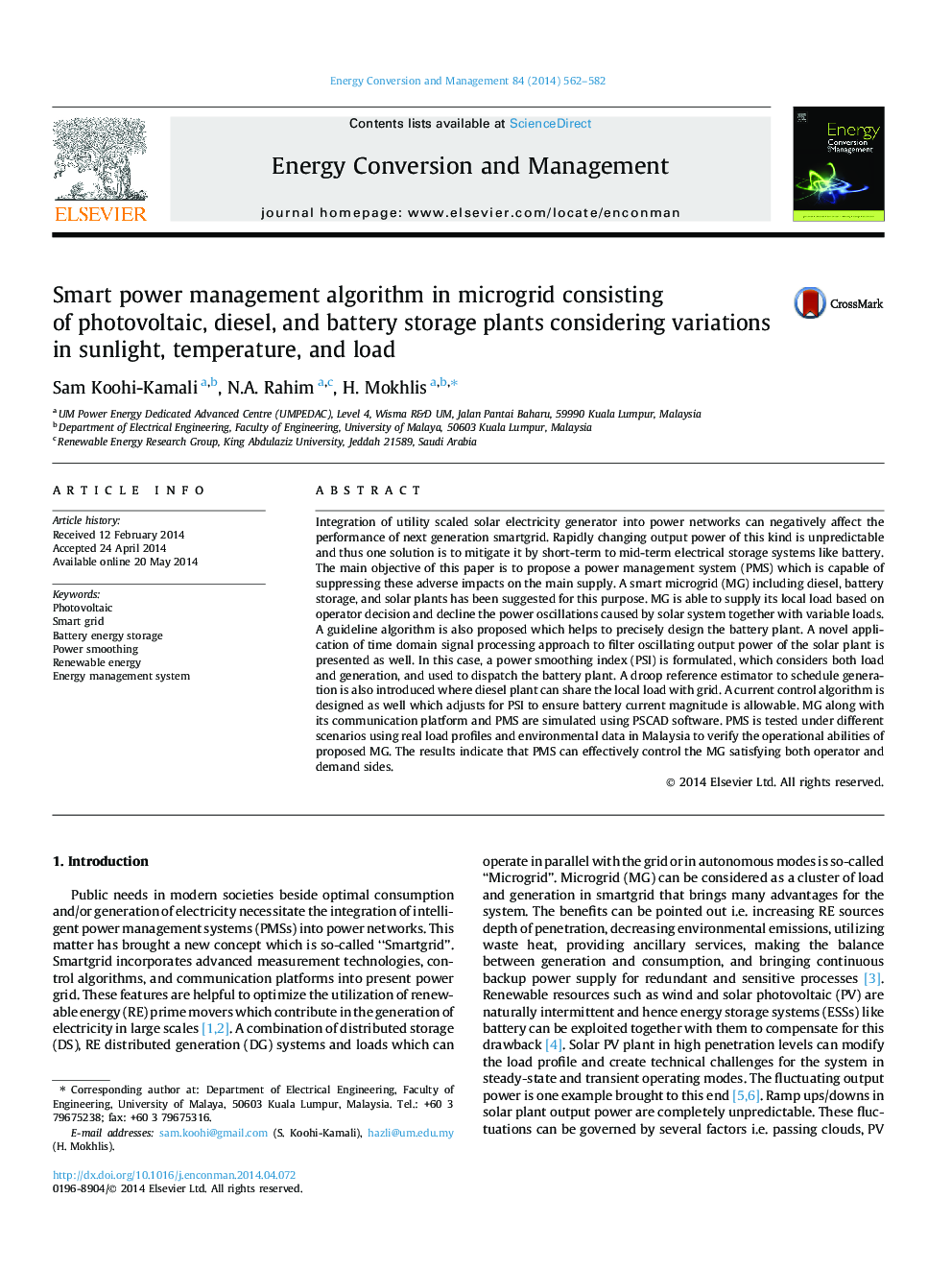| Article ID | Journal | Published Year | Pages | File Type |
|---|---|---|---|---|
| 763811 | Energy Conversion and Management | 2014 | 21 Pages |
•A novel power management algorithm is developed.•An effective power smoothing index is derived.•Application of battery storage in smoothing the power fluctuations is investigated.•An applicable battery sizing and designing algorithm is proposed.•An efficient battery current control algorithm is designed.
Integration of utility scaled solar electricity generator into power networks can negatively affect the performance of next generation smartgrid. Rapidly changing output power of this kind is unpredictable and thus one solution is to mitigate it by short-term to mid-term electrical storage systems like battery. The main objective of this paper is to propose a power management system (PMS) which is capable of suppressing these adverse impacts on the main supply. A smart microgrid (MG) including diesel, battery storage, and solar plants has been suggested for this purpose. MG is able to supply its local load based on operator decision and decline the power oscillations caused by solar system together with variable loads. A guideline algorithm is also proposed which helps to precisely design the battery plant. A novel application of time domain signal processing approach to filter oscillating output power of the solar plant is presented as well. In this case, a power smoothing index (PSI) is formulated, which considers both load and generation, and used to dispatch the battery plant. A droop reference estimator to schedule generation is also introduced where diesel plant can share the local load with grid. A current control algorithm is designed as well which adjusts for PSI to ensure battery current magnitude is allowable. MG along with its communication platform and PMS are simulated using PSCAD software. PMS is tested under different scenarios using real load profiles and environmental data in Malaysia to verify the operational abilities of proposed MG. The results indicate that PMS can effectively control the MG satisfying both operator and demand sides.
